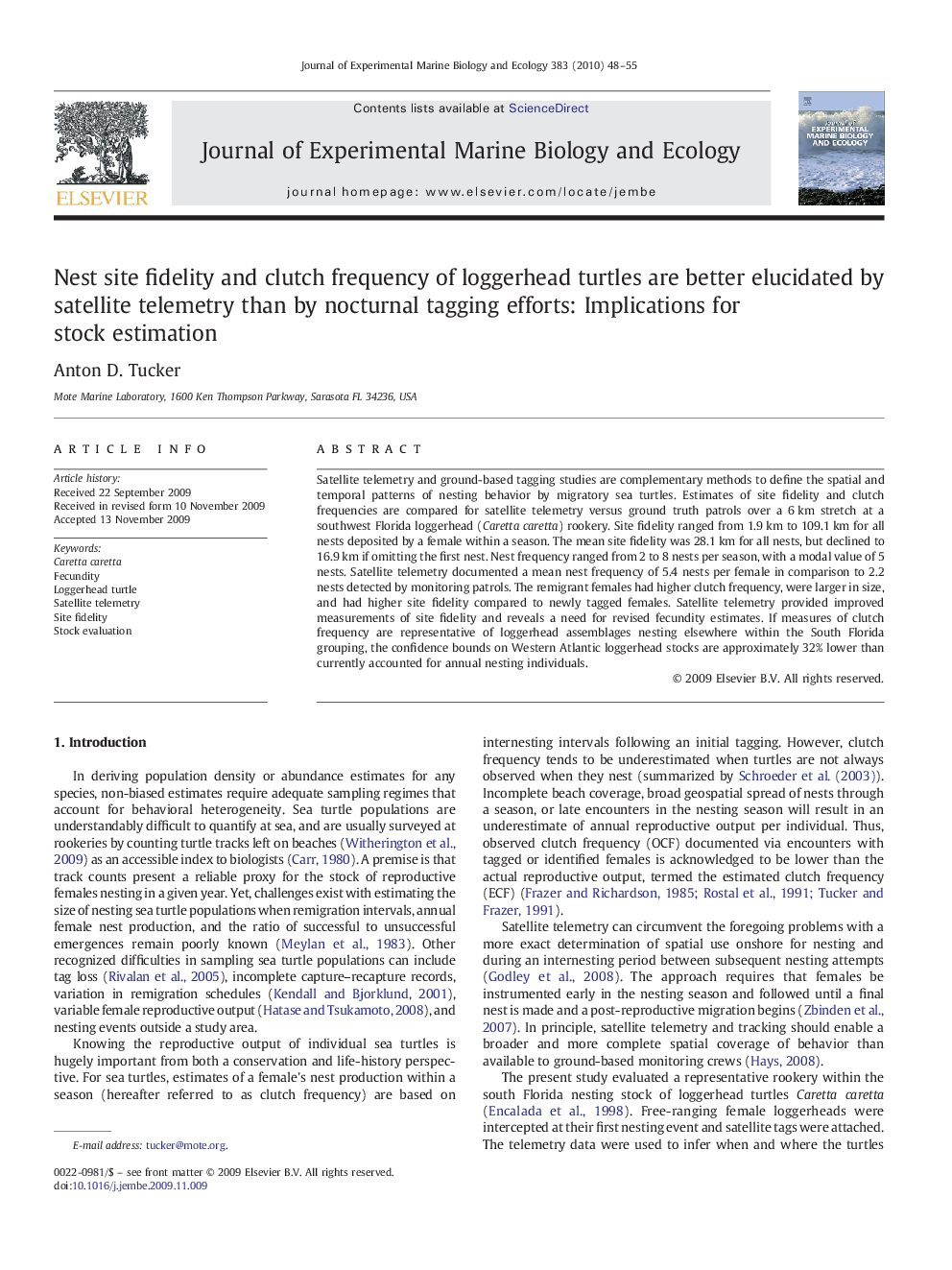| Article ID | Journal | Published Year | Pages | File Type |
|---|---|---|---|---|
| 4396818 | Journal of Experimental Marine Biology and Ecology | 2010 | 8 Pages |
Satellite telemetry and ground-based tagging studies are complementary methods to define the spatial and temporal patterns of nesting behavior by migratory sea turtles. Estimates of site fidelity and clutch frequencies are compared for satellite telemetry versus ground truth patrols over a 6 km stretch at a southwest Florida loggerhead (Caretta caretta) rookery. Site fidelity ranged from 1.9 km to 109.1 km for all nests deposited by a female within a season. The mean site fidelity was 28.1 km for all nests, but declined to 16.9 km if omitting the first nest. Nest frequency ranged from 2 to 8 nests per season, with a modal value of 5 nests. Satellite telemetry documented a mean nest frequency of 5.4 nests per female in comparison to 2.2 nests detected by monitoring patrols. The remigrant females had higher clutch frequency, were larger in size, and had higher site fidelity compared to newly tagged females. Satellite telemetry provided improved measurements of site fidelity and reveals a need for revised fecundity estimates. If measures of clutch frequency are representative of loggerhead assemblages nesting elsewhere within the South Florida grouping, the confidence bounds on Western Atlantic loggerhead stocks are approximately 32% lower than currently accounted for annual nesting individuals.
